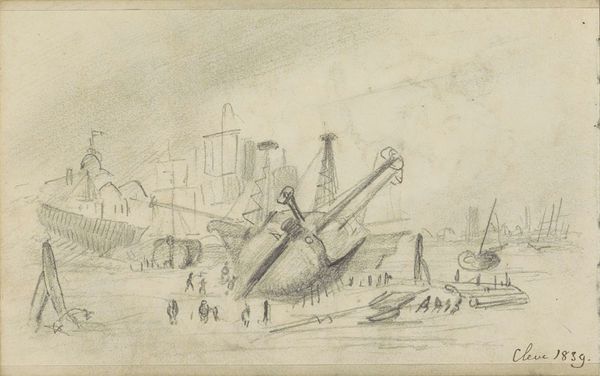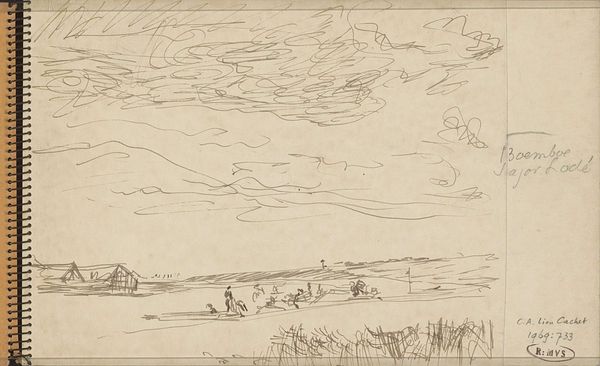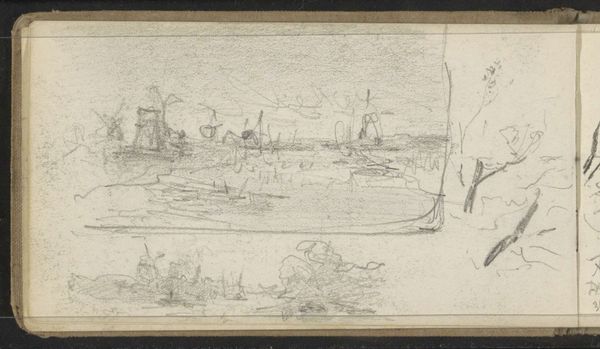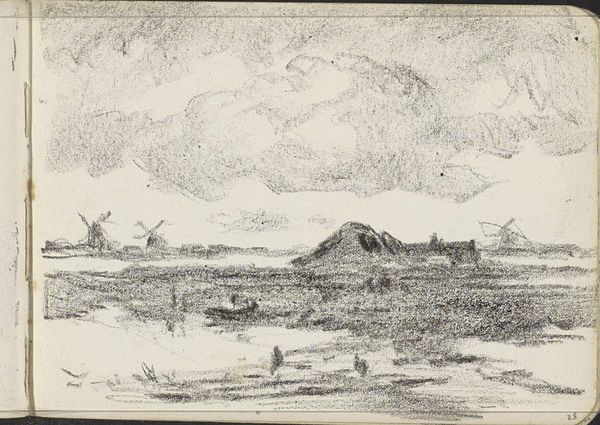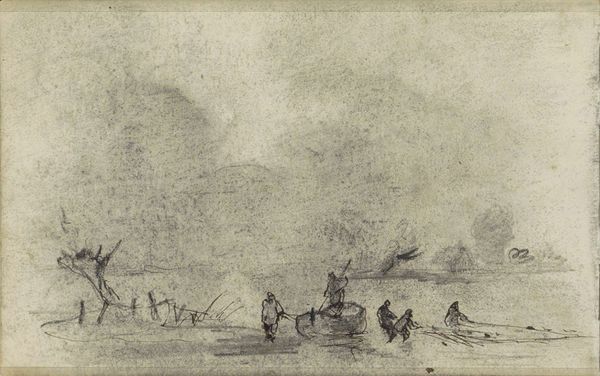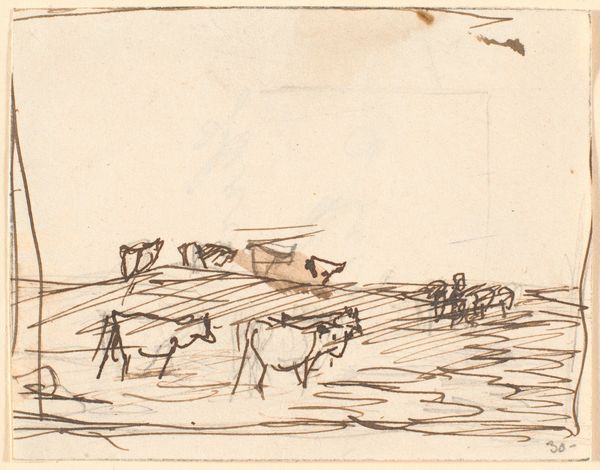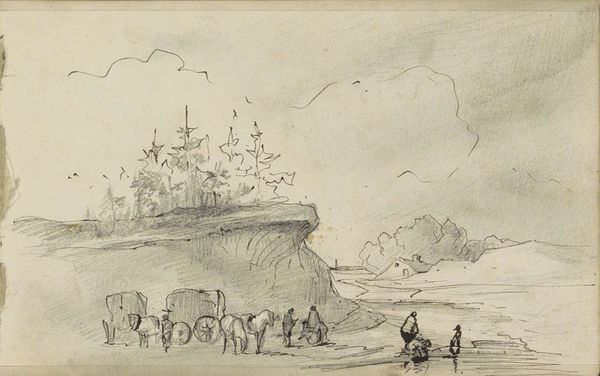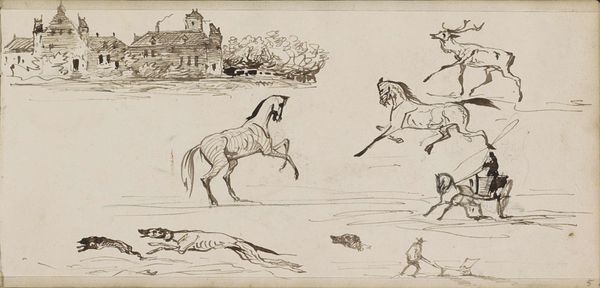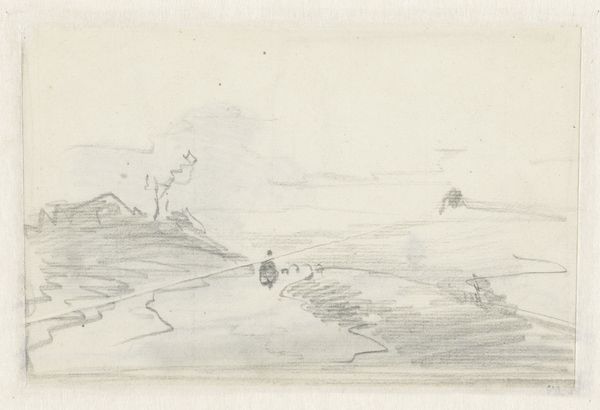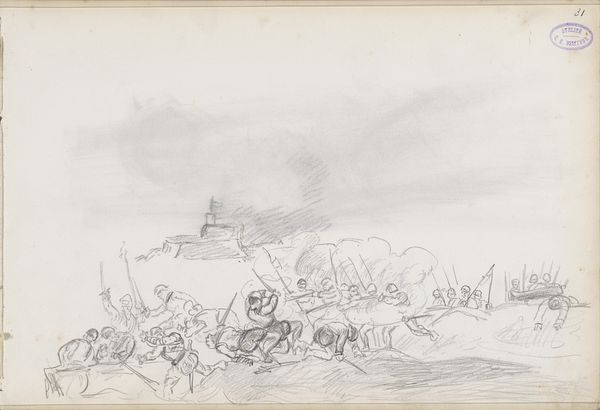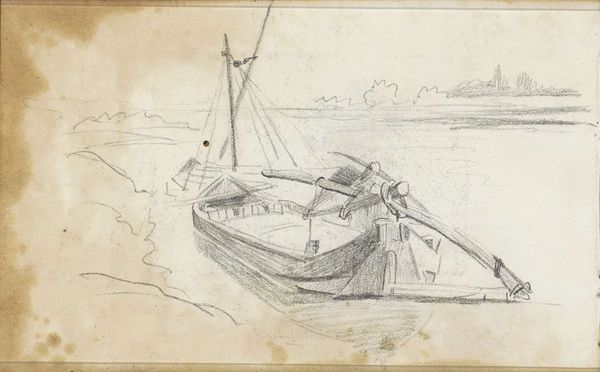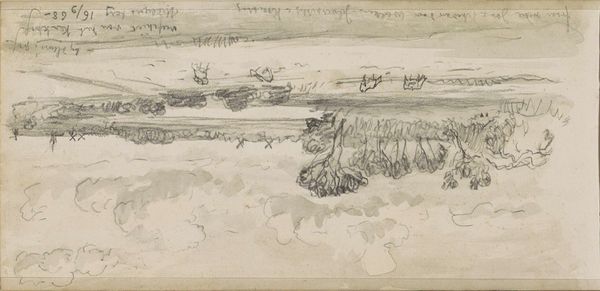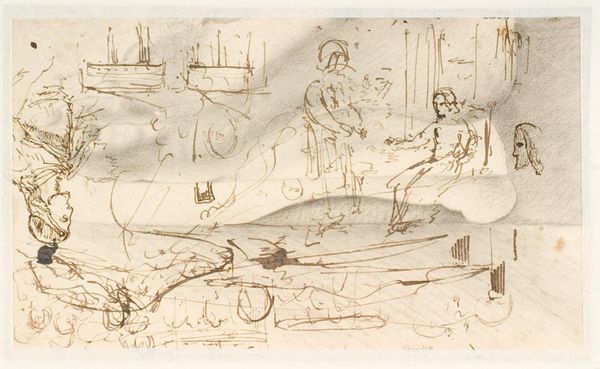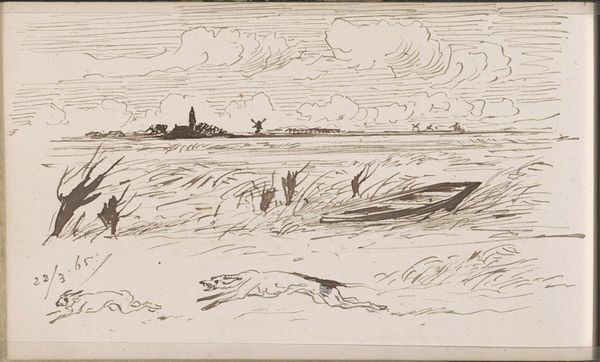
drawing, pencil
#
drawing
#
landscape
#
pencil
#
genre-painting
#
watercolor
#
realism
Copyright: Rijks Museum: Open Domain
Editor: So, here we have "Two Horses with a Cart by a Farm," a pencil drawing from 1839 by Johannes Tavenraat. It has this hazy, almost dreamlike quality. What strikes you most about it? Curator: Immediately, I’m drawn to the depiction of labour and land ownership here. Consider the historical context: 1839. The Netherlands was still grappling with the legacy of colonial exploitation and nascent industrial capitalism. How does Tavenraat’s seemingly benign landscape subtly reinforce existing power structures through its portrayal of rural life? Editor: That's an interesting perspective. I mostly focused on the aesthetic simplicity and the naturalness. So you see more in its socio-political narrative than the peaceful scene it appears to represent. Curator: Precisely! Look at the subdued, almost romanticized view of rural labor. This artistic choice potentially masks the harsh realities faced by agricultural workers and the disparities in land control at that time. How might this drawing have served to legitimize or normalize these socio-economic relations? Editor: Hmm, I see what you mean. It doesn’t directly depict oppression, but by focusing on an idyllic scene, it might downplay existing issues. So by excluding the struggles, it reinforces them. Curator: Exactly! Furthermore, how does the act of portraying laborers with this simplified representation further disempower them by neglecting their specific challenges? Editor: Wow. I didn’t think there would be such layers of hidden narrative. It makes you wonder what's omitted and why. Thank you. Curator: My pleasure. Considering these intersectional lenses truly enriches our understanding. It is important to explore the relationship between social change, artistic production, and lived experiences.
Comments
No comments
Be the first to comment and join the conversation on the ultimate creative platform.
